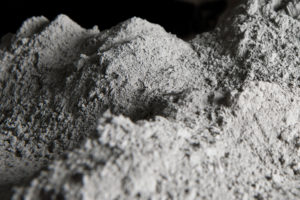What is cement?
 Concrete is the second most consumed material in the world. In fact, two times as much concrete is used in construction than all other building materials combined (Gagg, 2014). This is due to its strength and durability which can be achieved through the binding effects of cement. Concrete is formed when Portland cement creates a paste with water that binds with sand and rock to harden. So what exactly is cement?
Concrete is the second most consumed material in the world. In fact, two times as much concrete is used in construction than all other building materials combined (Gagg, 2014). This is due to its strength and durability which can be achieved through the binding effects of cement. Concrete is formed when Portland cement creates a paste with water that binds with sand and rock to harden. So what exactly is cement?
Common materials used to manufacture cement include limestone, chalk or marl combined with shale, clay, slate, blast furnace slag, silica sand, and iron ore. These ingredients, when heated at high temperatures, form a rock-like substance that is ground into cement.
Although cement is essential for concrete binding, cement production is responsible for significant environmental damage. The purpose of this article is to examine the damage cement is causing to the environment and introduce technologies to mitigate cement’s carbon footprint.
What is a Carbon Footprint?
Everything in the world has a carbon footprint. A carbon footprint corresponds to the total amount of Greenhouse gases (GHG), including carbon dioxide, produced and emitted by a product, individual, or industry, to name a few. GHG contributors include the production and consumption of fossil fuels, direct emissions, and transportation. They are typically quantified in equivalents of CO2 in weight per time. In 2015, cement’s carbon footprint contributed 5.2 billion tons of CO2 equivalents to the atmosphere.
What is the carbon footprint of cement?

Cement production accounts for up to 8% of total anthropogenic CO2 emissions each year (Miller, John, Pacca, & Horvath, 2018). This large amount of CO2 emissions can be attributed to the manufacturing process of cement. Cement is manufactured through a closely controlled chemical combination of calcium, silicon, aluminum, iron and other ingredients. Calcium carbonate, added as limestone and heated to high temperatures converts to calcium oxide and releases CO2 into the environment. This results in one pound of CO2 emitted for every one pound of cement produced (Goguen, 2013). In addition, heating these materials to temperatures over 1800 degrees Fahrenheit, which is necessary for cement production, requires the combustion of large quantities of fossil fuels, further contributing to CO2 emissions.
The large carbon footprint of cement is only exasperated by the demand for large quantities of concrete each year. Three tons of concrete are used for every person in the world each year, and that number is rising (Gagg, 2014). This results in more cement production to meet the demand for concrete and subsequently more CO2 emission. As economies and civilizations grow, this need for cement will continue to grow as well. The threat of global warming and irreparable damage to the environment requires the cement and concrete industries to develop technologies and practices that will mitigate CO2 emissions and lead to a more sustainable future.
What’s next?
Several viable solutions to reduce cement’s carbon footprint are being utilized today. A few of these carbon reduction approaches include expanding specifications for cement reduction, utilizing Supplementary Cementitious Materials as a partial cement replacement, and making the use of cement more efficient in the field. How will these technologies change the concrete industry and improve the carbon footprint of cement? The second part of this series will explore these new and innovative solutions!
